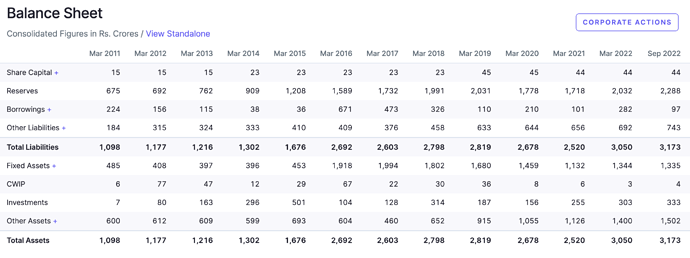Intro
Emami needs no introduction since the company name is a consumer brand in itself in India. Consumer brands of Emami are household names since past few generations - BoroPlus, Navratna, Fair and Handsome, Zandu Balm, DermiCool, Mentho Plus Balm, Fast Relief, Kesh King, etc.
Emami Limited is a leading Indian FMCG company that was founded in 1974. The company operates in the personal and healthcare space with products such as skincare, haircare, health and wellness, and other FMCG products. The company is headquartered in Kolkata, India, and has a presence in over 60 countries worldwide.
P&L, B/S, Valuations, and Return Ratios
- As of 31 Mar 2023, the company has a Mcap:15800 crs, TTM Sales:3340cr, TTM PAT:815cr
implying a P/E of 18.7 which is low for an FMCG company - PAT can vary every quarter with margin fluctuations, so additionally if we can consider MCap/Sales,
- MCap/Sales currently stands at 4.7, historical high(last 15yrs):13, historical low(last 15 years): 1.7, avg: 5.9
- Debt free company
- Keeps doing buybacks from open market and generally during during the period when market falls, hence it gets the best price for buyback due to these 2 reasons . Recent buyback was done during Mar2023 market fall. Hence maintains ROE of 23-28% over 3/5/10year periods
- Though sales growth has been slower in high single digit CAGR over the years. Profit growth around 12% over a 10year period.
- Strong moat due to strong Indian brands
*One negative is that the company also invests in unrelated sports business - football leagues in Kolkata, which I feel could be a distraction. However I have not come across management integrity issues.
SWOT Analysis:
Strengths:
- Diverse product portfolio
- Strong market position in India
- Growing global presence
Weaknesses: - Dependence on the Indian market
- Limited presence in some FMCG segments, unlike companies like HUL
Opportunities: - Expansion into new markets
- Increased demand for natural and herbal products
- Growing awareness of health and wellness
Threats: - Intense competition in the FMCG industry
- Changing consumer preferences
- Increasing raw material costs
Financials:
P&L
Sales growth over the last 10years has been accompanied by sustained profitability.
Emami Ltd has been paying regular dividend to its shareholders. Company has been increasing its dividend payout with increasing profits.
It has been spending about 15-17% of its sales inflow on its brand promotions every year.
Operating profit margins (OPM) of Emami Ltd has been consistent at 24-25% since FY2010. This is a good sign as Emami is able to pass on the increase in the cost of raw material to its consumers easily and protect its margins.
Last 10year return ratios:
Balance Sheet:
Promoter Holding:
Due to consistent buybacks, the promoter holding is increasing. This also helps return ratios.
Risks:
- The company has delivered a poor sales growth of 5.11% over past five years. The sales growth in recent years seem low, so growth is slow
- Diversification of the group in unrelated business like Realty, Hospital, which they are looking to dispose off. Though these don’t fall into Emami FMCG umbrella, it deviates the focus of the promoters from the core money making business. The promoter group also owns Emami East Bengal FC.
- High Promoter pledge: If you look at promoter shareholding, it stays consistent around 54% mark, but the promoters have pledged their shares.
Pre-2020, the promoters of the group had sold cement business to Nirma group at a valuation of Rs 5,500 crore which helped them to reduce the ratio of pledge to around 45 per cent from 89.24 per cent earlier. Source: Emami promoters to hive off assets to reduce pledge - The Economic Times
In 2020, the promoter pledge was around 54%. The promoters had publicly declared that they want to reduce their pledge by selling some of the group’s non-core assets. This was visible in their pledge reduction to around 36%. However in recent quarter, the promoter pledge has once again increased by 4% to 40% levels.
- Consumer demand remains muted across urban and rural markets with high inflation affecting consumption
*Company has been delivering low single digit growth, compared to a high single digit growth of 8% of pre-pandemic levels
Disc: Invested at 390 levels. I am not a registered investment advisor




